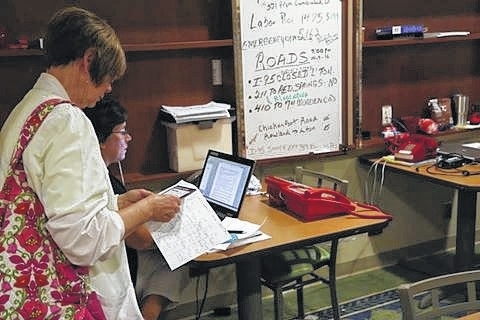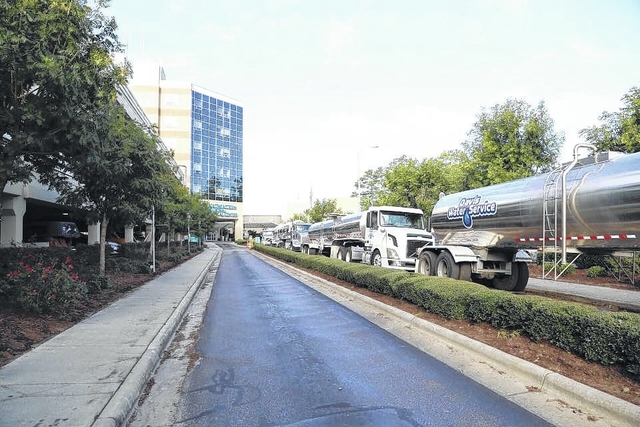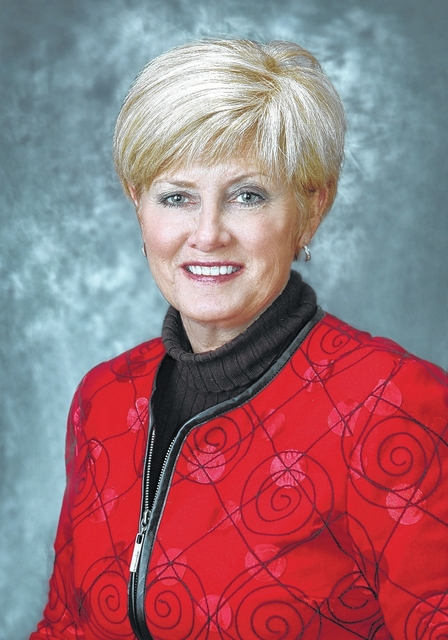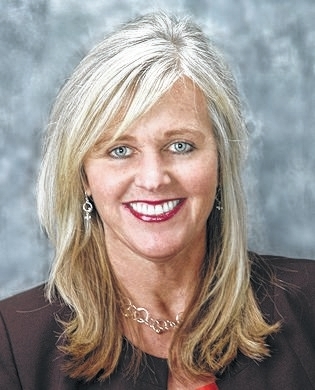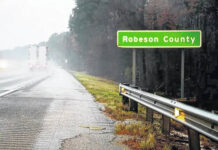LUMBERTON — For more than a week before Hurricane Matthew’s Oct. 8 arrival in Robeson County, staff at Southeastern Health were closely monitoring the storm’s uncertain path.
“The last prediction we had Friday was that we might see 5 to 6 inches of rain,” said Joann Anderson, president and CEO of Southeastern Health, which operates Lumberton’s Southeastern Regional Medical Center.
The hospital had been through storms before and has held emergency simulations. Officials knew they would likely lose power and would need to open a command center to oversee operations. As part of their emergency response plan, they keep 72 hours of food and equipment on hand as well as 48 to 96 hours of generator fuel.
“What we didn’t anticipate was the total impact of the hurricane itself,” Anderson said. “We didn’t anticipate 15 inches of rain. We didn’t anticipate a sustained period of flooding like we had to the magnitude that we had. We didn’t anticipate the number of trees that were going to be down and the fact that they would not only be down on power lines knocking out power, but also on roads and that the roads would be so significantly impacted by it.”
With all that is outlined in the hospital’s emergency plan, the 15 days Lumberton was without running, potable water after the storm took most in this city by surprise.
“We never anticipated the loss of water,” Anderson said.
Throughout Hurricane Matthew and its aftermath, Southeastern Regional Medical Center faced failing generators, an influx of people looking for shelter and impassable roads that kept staff and supplies from easily getting to the hospital. Streets on either side of the hospital flooded and internet service and cell phone signal vanished, posing a challenge for communicating with the hospital’s 2,489 employees. All told, the facility lost power completely for just a few minutes and was never without some source of water, although it did rely on bottled water for about 36 hours.
“Nearly all of it was in the emergency plan, it just had never been tested to this magnitude,” said David Sumner, vice president of corporate services and chief strategy officer.
Before the storm, says Anderson, staff inspected and fueled generators, checked on home health patients and made a list of patients with treatments that rely on electricity. By Oct. 7, the storm had been downgraded from a category 5 at its peak to a category 1.
“From a response perspective, I think we did everything we needed to do in anticipation of what we thought was going to happen,” Anderson said.
As the rain continued to fall, the “skeleton crew” in SRMC’s command center and the hospital’s 184 patients hunkered down. But the next day, it became apparent that Matthew’s effects of Hurricane Matthew would linger long after skies cleared.
SRMC requested extra staff and a mobile hospital — a self-contained unit with water and power. Parked outside the main hospital, the unit saw about 25 patients each day after Matthew, including one surgery and a birth.
Without power, hospital staff decided to airlift babies in the neo-natal intensive care unit to New Hanover County, as the infants’ treatment relied heavily on temperature control. SRMC is served by Duke Energy, which suffered extensive damage to its lines, leaving some Robeson residents in the dark for a week.
For Sumner, Oct. 10 was among the most trying moments in Hurricane Matthew’s aftermath: The hospital was preparing to be without power for days when it learned Lumberton’s municipal water system could be down for a month or longer.
The hospital, which uses about 4.5 million gallons of water in a month, had only ever experienced “intermittent” water outages before, Sumner said.
“We use water in our clinical areas extensively, in our operating rooms to cleanse and sterilize our equipment, we use it in our dialysis suite to make that process work effectively, we use it to cool the hospital, we use it in our kitchen to prepare meals and feed patients, as well as our personal needs of consumption, toilet needs and bathing,” he said.
As outlined by the emergency plan, the hospital had days of bottled water on hand. It also has shallow wells at the main hospital and WoodHaven nursing home that it can tap “just for this reason,” Sumner said.
Elective surgeries were put on hold and the hospital was put on diversion, meaning Emergency Medical Services was asked to take all but critical patients elsewhere. Managers, directors, tech department employees and others walked the hospital halls with five-gallon buckets making sure toilets were flushed.
It took about 36 hours for a solution to arrive in the Davis Water Company, which brought tankers of water mostly from St. Pauls to the hospital, WoodHaven and Southeastern Hospice House.
On Oct. 12, SRMC’s generators began failing. One, overworked, began emitting thick, black diesel smoke, prompting rumors that the hospital was on fire. The generators typically run for no more than 12 hours at a time.
“We basically did have to shut that generator down along with one other one,” Sumner said. “… In doing so, the demand on the existing generators that were running was too great so we actually went for a period of just a few minutes on Wednesday where the generators actually shed all their loads.”
The hospital reduced its power usage and was able to get the generators running again. At about 11 that night, Duke Energy found a way to back-feed power to the facility.
Amid the uncertainty over water and electricity, 13 patients were successfully moved to other hospitals, including critical patients, patients needing surgery and the NICU babies.
Anderson said staff fully expected an influx of people, but thought they would be seeking medical attention.
“There were just people everywhere,” she said. “They were sitting everywhere, they were in the hallway, the cafeteria. It was kind of shocking to me to see that many people. I couldn’t understand why they were here and I realized they had no where to go. The power was out. They needed to be able to secure power for their phones so they could communicate or for their health care devices. For them this was a shelter, this was a beacon amid the darkness.”
The Emergency Department didn’t see a surge in visits, says Renae Taylor, chief nursing officer. Typically, the ER sees 175 to 200 people a day. In the immediate aftermath of the storm, 125 to 140 people were coming in each day, and Taylor said numbers were just starting to get back to normal last week. Most people came in with chronic health issues, for example, dialysis patients whose treatment relies on power and water. There were few storm-related injuries.
Putting the hospital on diversion likely prevented some visits, but Taylor said the hospital would not have turned away a patient with a life-threatening ailment despite having about half its normal staff.
“It’s phenomenal now to look back at what we went through and how we did what we did,” Taylor said.
Staff asked people without medical needs to seek shelter elsewhere in order to conserve the hospital’s supply of food, water and generator fuel.
“Realizing though we couldn’t be a shelter for everybody — it was going to be bigger than those people that were here — we did have to take steps and say we will help and do everything we can for those people who need medical attention,” Anderson said, “but if it’s strictly shelter, then we need to get them to a safe shelter.”
Many Southeastern Health employees stayed at the hospital for days in Matthew’s aftermath, performing whatever job needed to be done, while others took insulin, oxygen and medication and set up mini clinics at emergency shelters. The staff of Southeastern Home Care Services delivered oxygen to patients in need while rain was still pouring.
“I would say we’re second to none,” Sumner said. “We went through a tough time, we went through a long time. There were days I promise you I’d have to ask somebody what day it was.”
Sixty-six hospital employees lost their homes or vehicles or had extensive damage to their houses. In response, Southeastern Health has set up an employee relief fund that has raised more than $45,000.
“They came to work with a smile on their face and said there is a higher need here than my own personal need,” Anderson said.
Going forward, officials say communication will be a bigger part of SRMC’s emergency plan. Several suggested setting up an automated emergency alert system for the campus. Anderson said in the future, staff will also plan for more than 72 hours of isolation and will make sure one team member is in an alternate location with internet access.
“We learned a lot through this process,” Anderson said. “We learned the absolute value of email and the internet for communication. We learned the value of water and what you lose when you don’t have water. I think we already knew the value of power and electricity, but when you put all those together you realize that you’re kind of left on an island in and of yourself and you have to be self-sufficient.”
